“When you’re going through hell, keep going,” Winston Churchill reportedly stated. Clearly, he had no concept of what a development hell is, or how most ideas and films that enter there never see the light of day; how they are burned to ashes. Several Alien scripts and projects got off to a good start but were discontinued at some point throughout the development process.
Many filmmakers and writers, from James Cameron to Neill Blomkamp, have had their projects canceled in the middle due to budgetary, artistic, or other restraints. Dan O’Bannon is most known for creating the characters who appear in the ‘Alien’ movies, and it may appear that the franchise was born completely formed.
The evolution of the ‘Alien’ films, on the other hand, is no less chaotic and violent than the life of a Xenomorph. In fact, if we look at the production of Ridley Scott’s 1979 original, the story was originally written by O’Bannon. He then worked with Ronald Shusett to improve and modernize it further.
Producers David Giler and Walter Hill worked on the story as well, frequently adding and eliminating scenes, subplots, and other elements. Ridley Scott himself was in charge of the entire production. As you can see, nothing is exempt from the wrath of development.
We have assembled a list of every unmade Alien film that was shelved at various stages in this video. Surprisingly, some of the scripts that will be included among the entries have more grit and energy than the real films that were produced on the big screen. So, without further ado, let us get this party started.
Neill Blomkamp’s ‘Alien 5’
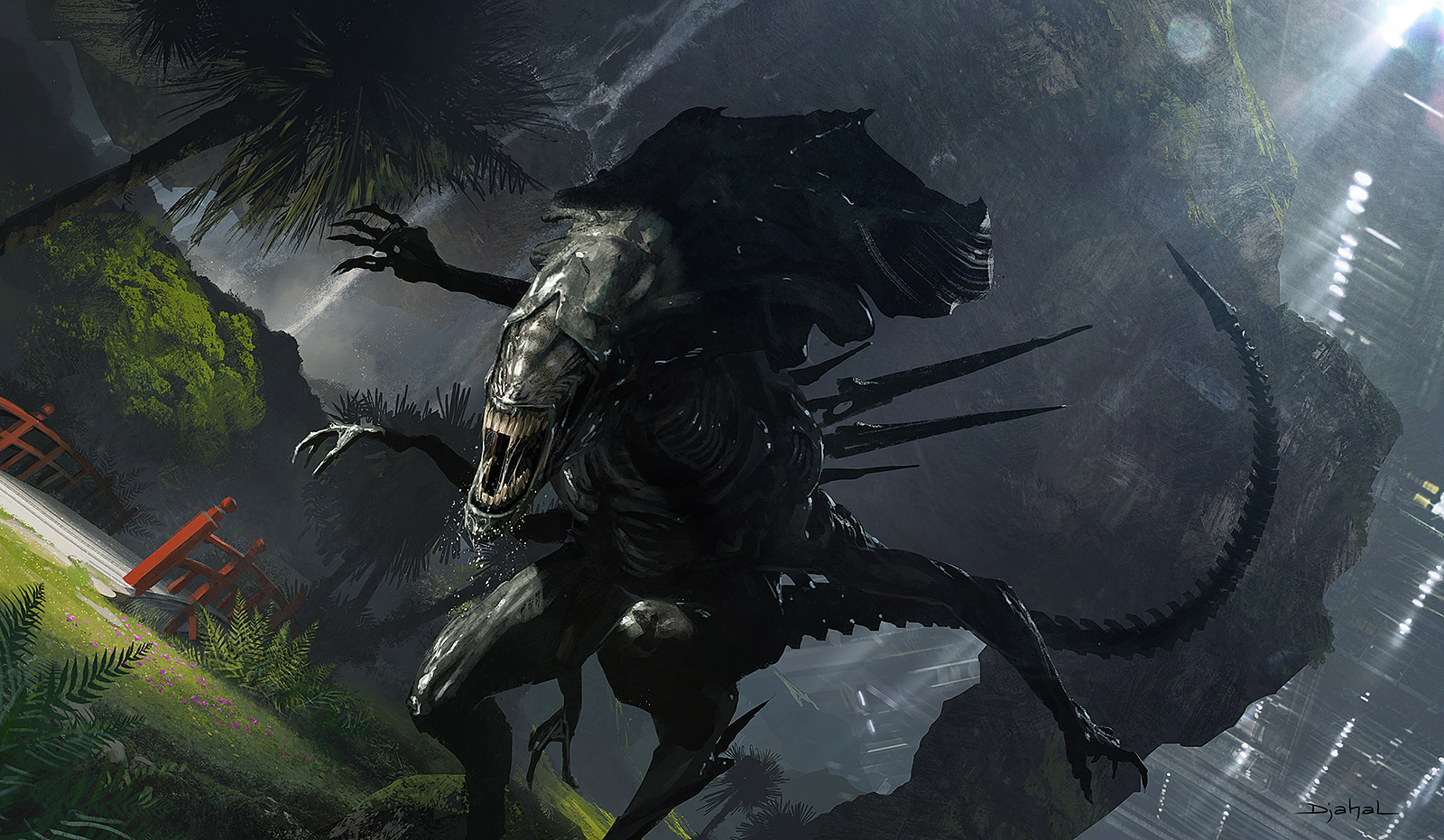
If we are to believe Neill Blomkamp, ‘Alien 5’ would have been just the way fans wanted their next ‘Alien’ film to be. It was to be directed by sci-fi maestro Blomkamp as a sequel to the two original films and the fifth film of the franchise. It would have retconned the story of ‘Alien 3’ and brought back Ripley, Hicks, and Newt in significant roles. ‘Alien 5’ was announced back in 2015, much before the release of Ridley Scott’s ‘Alien: Covenant.
In fact, Scott was supposed to produce the film through his Scott Free Production, and ‘Alien 5’ was slated for release in 2017. Everything was going fine for the film, so much so that even 20th Century Fox confirmed Neill Blomkamp’s involvement with ‘Alien 5’. Fans were delighted when Blomkamp revealed the concept art for the film that he intended to title ‘Alien: Xeno’.
In the art by Geoffroy Thorens, an older Ripley and Hicks could be seen. One of the images depicted an adult Newt, and other exciting stuff like enhanced weaponry, newer designs for synthetics, etc. But the most interesting feature remained an exoskeleton based on a Xenomorph Queen that Ripley wore to fight off a Queen.
But this move of sharing the artwork with fans backfired for Blomkamp because Fox was blindsided by it. Later, Blomkamp and the executives of Fox met again and came to the conclusion that Blomkamp would go ahead with the film, but instead of retconning ‘Alien 3’ and serving as a sequel to the first two, the new film would be called ‘Alien 5’ and would act as a sequel to the first four films. Interestingly, Blomkamp and Sigourney Weaver worked together in Blomkamp’s ‘Chappie’, and Weaver later revealed her interest in reprising her role as Ripley.
So, although not much is known about the film’s plot, ‘Alien 5’ looked promising because Ripley and Hicks would have had significant roles. Furthermore, the concept art that Blomkamp has released over the years looks very promising.
In the end, it turned out that Fox and Ridley Scott decided to take a step back on ‘Alien 5’, probably because of the poor critical response that Blomkamp’s ‘Chappie’ received. Apart from this and the rumors that Blomkamp’s vision of ‘Alien 5’ was way too radical and novel, we cannot really see another reason why ‘Alien 5’ never came to life.
Liam O’Donnell’s ‘AVP 3’
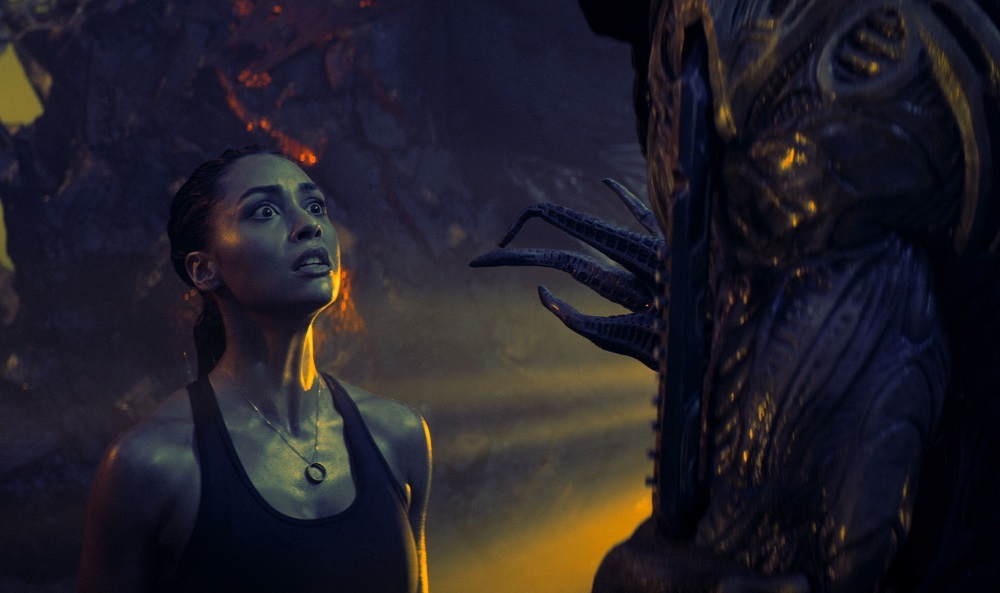
Liam O’Donnell wrote a sequel script to ‘Aliens vs. Predator: Requiem’ in 2007, and because it was in its preliminary stage, the script was simply titled ‘AVP 3’. The first two ‘Alien vs. Predator’ films were set in contemporary timelines, but Liam’s film was supposed to take place on a slightly futuristic and almost post-apocalyptic Earth.
According to the plot, two decades after the mess that took place in Gunnison in which a Predalien and a Predator had to be destroyed using a nuke, the world has changed for the worse. Exaggerated levels of global warming have led to the melting of polar ice, which in turn raised the water levels.
Scores of island nations were lost underwater, while the landmasses that are still available have an extremely high population density, leading to a chaotic situation across the world. The thawing of ice also released the Xenomorph Queen that was seen drowning in the cold waters of the Antarctic.
And as is a staple with such stories, individual national governments unite to form a unified world federation that was primarily controlled by the evil Weyland Yutani. Due to Weyland Yutani’s control and near-autocracy, revolutionaries and rebels came up, most of whom migrated to what was left of Africa, the only continent out of Weyland’s control. Furthermore, just like the Alien universe, Liam’s script dealt with the colonization of other worlds—a feat that was made possible due to the access to Yautja plasma technology.
The scientists devised a way of reverse-engineering the high-end technology and were using it to reach the far reaches of the Milky Way galaxy. The climactic battle would have taken place in Africa between the freed Xenomorph Queen, a Yautja, and a human.
However, the script couldn’t see itself turning into a movie because of several reasons. The most prominent ones of them are its setting and the poor critical and commercial reception to its predecessor, ‘Alien vs. Predator: Requiem’. From what we know, the executives wanted the film to be set in space because ‘Requiem’ mentioned the homeworld of the Yautjas. Liam’s script had potential, but there was nothing new that it brought to the table.
‘Alien: Engineers’
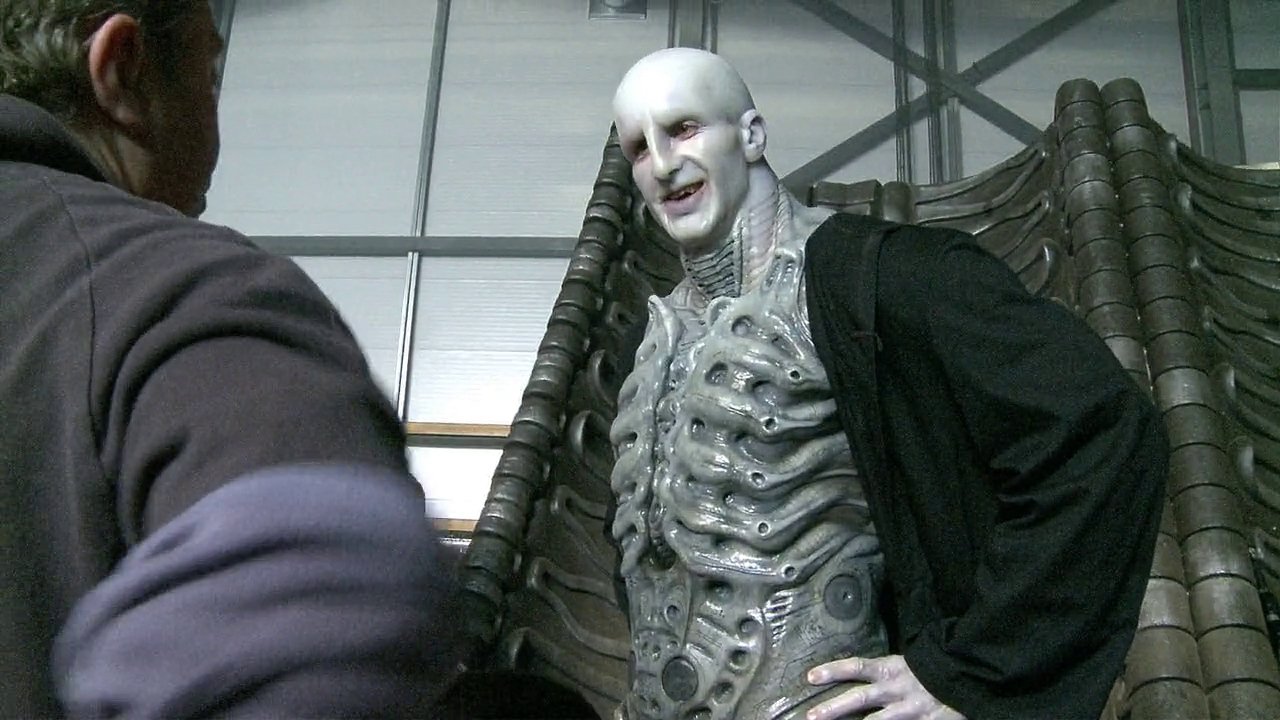
‘Alien Engineers’ was also called ‘Alien: Origins’ at some point in the developmental stage. Written by Jon Spaihts, the film was to serve as a prequel to Ridley Scott’s ‘Alien’, but later, Damon Lindelof was brought in to rework Spaiht’s script, which was finally filmed as ‘Alien: Prometheus’. Because ‘Alien: Prometheus’ is basically an updated script of ‘Alien Engineers’, the two scripts share a great many similarities, just that ‘Engineers’ depended too much on the Alien lore, their reproductive cycle, etc.
So, in ‘Engineers’, Jocelyn Watts and Professor Martin Holloway find evidence of aliens who created humans. They soon meet Peter Weyland, who funds their mission to travel to LV 426 to dig up more information about these creators and possibly seek technology to enhance human life.
Their ship, Magellan, reaches LV 426, where they discover several artificial structures, clearly the work of some kind of sapient beings. Upon further investigation, they come across terraforming machines and a large pile of Engineer corpses. The film then divides into many intriguing subplots while maintaining similarities with Prometheus.
Jocelyn Watts begins experimenting with one of the Engineer heads while two other crew members, Millburn and Fifield, get stuck inside an artificial structure because of an impending storm. They get attacked by centipede-like alien creatures, much like the Hammerpedes from Prometheus.
On the other hand, the director of operations, Lydia Vickers, awakens several mercenaries who had been secretly sent on the mission. Vickers and these mercenaries then start deconstructing the terraforming machines so that the technology could be shipped back to Earth. But the most crucial event of the film was the impregnation of Holloway by an alien.
Holloway and Watts later have sex, which ultimately results in the birth of a proto-Xenomorph. Meanwhile, the synthetic David finds an Engineer spacecraft, which was set on a course to Earth to destroy humanity by unleashing a plethora of Xenomorph face-huggers. Somehow, Watts gets impregnated by a face-hugger, but she manages to remove the alien from her body through surgery and well before it could burst out of her chest.
In the end, David wakes up an Engineer who attacks the remaining survivors, but it is revealed that he was implanted with a chest-burster before he had begun his hypersleep. The chest-burster comes out of the Engineer and soon transforms into an Ultramorph, as opposed to the Deacon from the film Prometheus.
Jon Spaiht’s script had a lot of potentials, and it is through this script that we learn how ‘Prometheus’ and ‘Covenant’ had rather philosophical overtones. Ridley Scott couldn’t really build the same magic with ‘Prometheus’ as he did with his original ‘Alien’ film back in 1979.
I mean, the first two Alien films succeeded solely because of the lore that they provided; it was complex yet intriguing and understandable, without the need for unnecessary elements. While ‘Prometheus’ stands as a great individual film, it doesn’t properly fit into the Alien universe.
On the other hand, Spaiht’s script was significantly grounded in the source and would have garnered a better critical and commercial response. Having said that, one can not necessarily say if Spaiht’s ‘Engineers’ was better or Lindelof’s ‘Prometheus’. So, we’ll let you be the judge of that.
James Cameron And Ridley Scott’s ‘Alien 5’
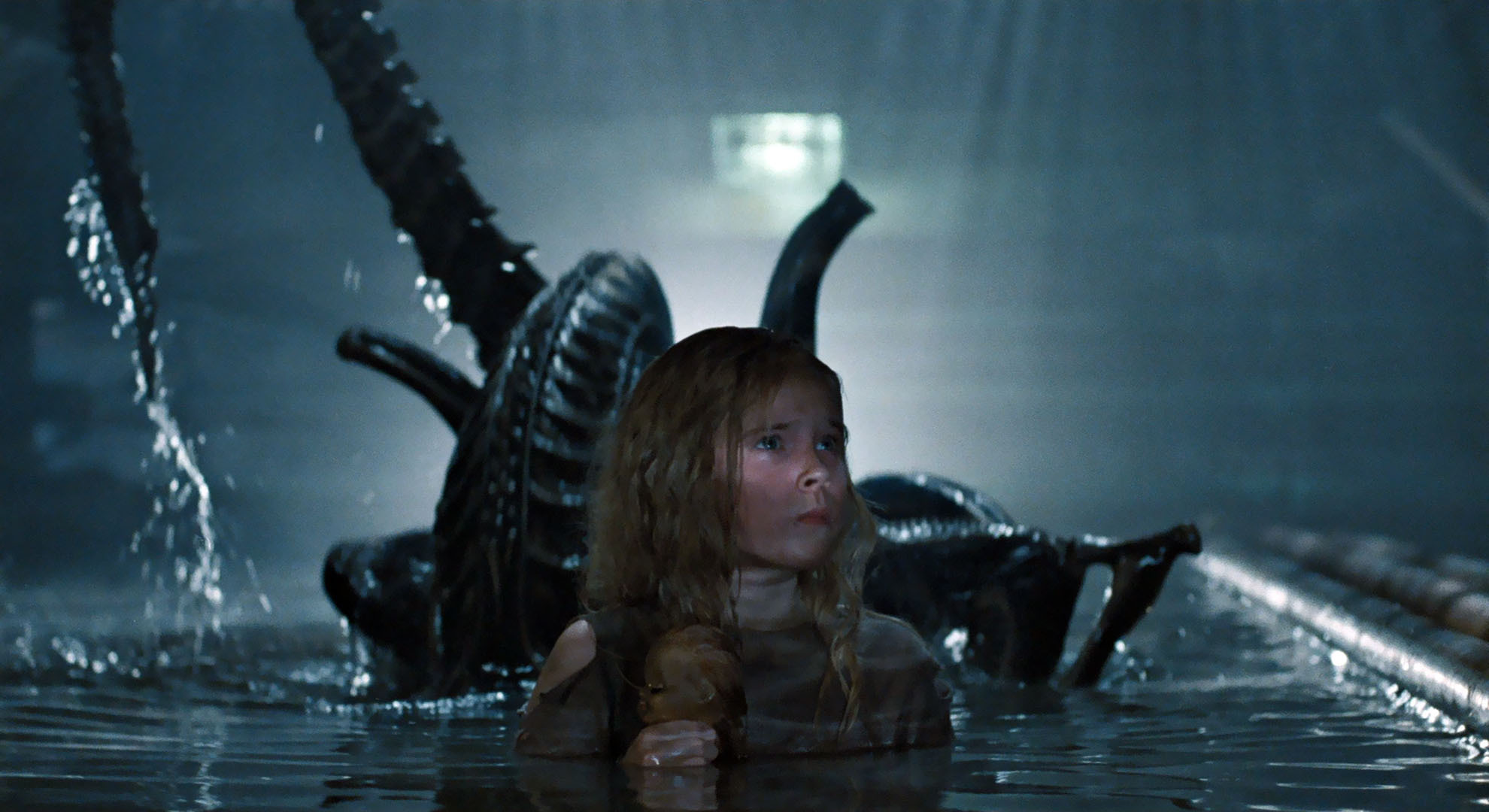
Back when Cameron was making the aquatic alien sci-fi film ‘The Abyss’ for Fox, he had an idea of making another Alien film that he would write and produce while Ridley would take the directorial reigns. Interestingly, Ridley himself wanted to return to the Alien franchise and film the battle between humans and Xenomorphs on Earth.
The two of them were heavily disappointed with the third and fourth films of the franchise and wanted to revive it into something worthwhile and beautiful. The film would also have brought back Sigourney Weaver.
So, you see, the likes of Cameron and Scott making an alien film together with Weaver in it, the idea sounds too good to be true, and it was so. The project died when the executives went ahead with making ‘Alien vs. Predator. The AVP film didn’t just steal Ridley’s idea of taking the battle to Earth, but according to Cameron, it killed the franchise.
It now seems that Cameron is not at all interested in rejoining the Alien universe and wants to stick to the Avatar universe. However, one cannot help but hope for a project like this one to come to life. Interestingly, Sigourney Weaver, who was attached to Neil Blomkamp’s ‘Alien 5’, once revealed that Cameron saw potential in the script and the direction in which Blomkamp was taking the film to. Apparently, it would have opened many doors for the franchise to explore. Alas! Even that project burned away in the developmental hell.
The Hunt: Alien vs. Predator by Peter Briggs
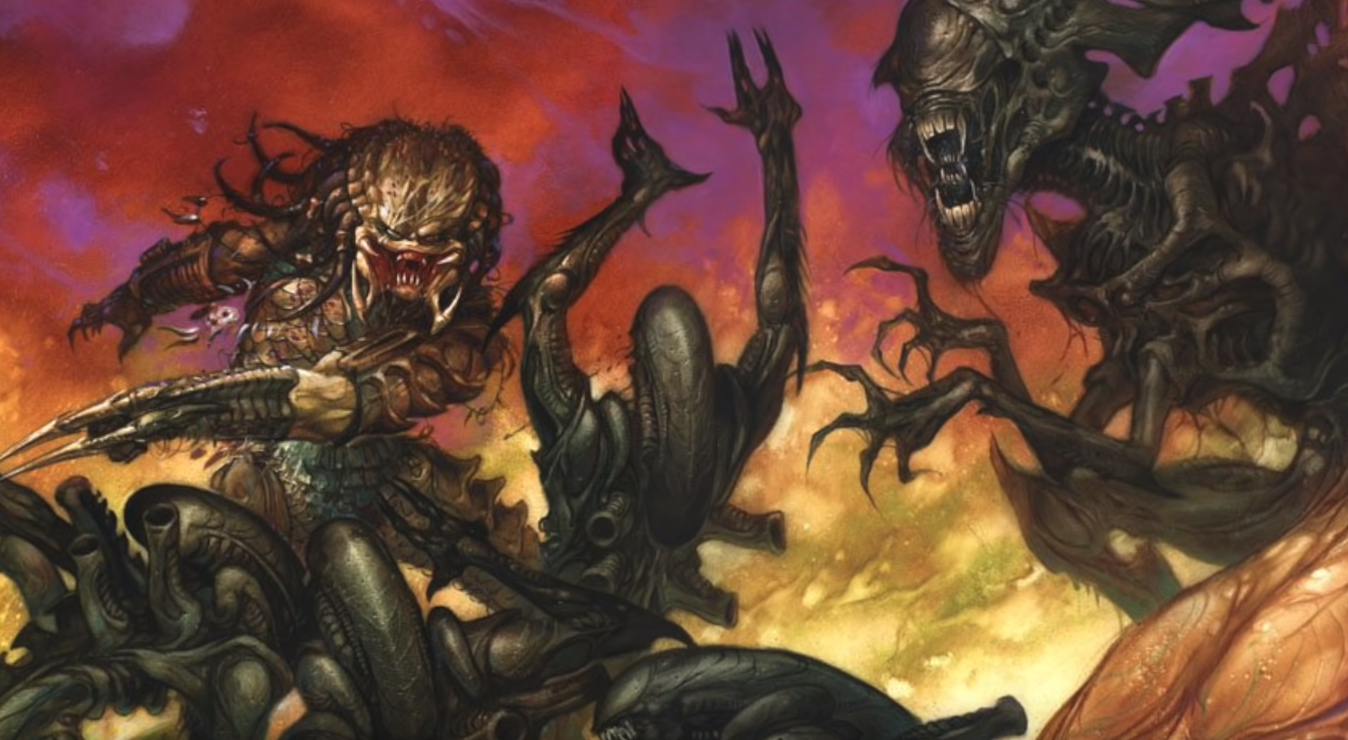
The plot of the film closely follows the original ‘Alien Vs. Predator’ Comics that Dark Horse Comics published in 1990, and naturally, strays farther away from the actual story of the ‘Alien Vs. Predator film. Peter Brigg’s script followed a group of Predators who would seed planets with Xenomorph eggs so that facehuggers would impregnate the indigenous lifeforms of the planet, and the resultant Xenomorphs would prove as a worthy game.
For this purpose, they had a Xenomorph Queen on their ship that would serve as the source of these eggs, and before dropping the eggs on a planet, they would check for royal Ovomorphs and destroy them. But to make things more challenging and exciting, the leader of Predators named Broken Tusk interrupted this process and dropped a royal Ovomorph on the planet of Ryushi.
Now, Ryushi was a lush green planet that housed a communications outpost and was manned by a few colonists. Ryushi was soon infested by a large number of Xenomorphs. When the Predators arrived on Ryushi, they first slaughtered a few humans who were out on a hunting excursion.
However, it was the Xenomorphs that the Predators were more interested in. Nevertheless, Broken Tusk’s sense of adventure had caused him a lot of losses. The Xenomorphs managed to kill all the Predators until only Broken Tusk remained. He quickly joined hands with a human named Hiroko Noguchi.
Together they would carry forward the fight against the Xenomorphs, and especially the Xenomorph Queen, that had built a hive in one of the nearby tunnels. Noguchi fought brilliantly against the Xenomorphs and earned the respect of Broken Tusk. In the climactic battle, Broken Tusk got mortally wounded by Xenomorphs, and Noguchi took his weapons to fight the acid-spitting aliens all by herself.
In the end, other Predators arrived on a drop-ship and took away the corpse of their fallen warrior. But before leaving, they offered Noguchi a chance to join their ranks as a Yautja, an offer that she was honored to accept.
As you may notice, the script is far from that of the movie which took place on Earth and pitted young Yautjas against a Xenomorph Queen. However, Brigg’s script holds several differences from the comics as well. For instance, in the comics, Ryushi was an arid planet with two suns, but the script shows it as a lush green planet.
The lead character of the comics was named Machiko Noguchi, while the script has made reference to Hiroko Noguchi. We can call this one more of a similarity than a difference though.
Furthermore, the Predator Broken Tusk is clearly Dachande from the comics. Interestingly, Briggs didn’t intend his script to be turned into a film. Coincidentally, 20th Century Fox discussed the idea of merging the Predator and the Alien universes, and naturally, Brigg’s script came as a happy surprise.
It proved pretty efficient back then because of the several references to the Alien Universe, such as bodies glued to walls waiting for impregnation and the existence of the United States Colonial Marine Corps. This led 20th Century Fox to ask Briggs to rewrite the second draft of his proposed script. Although the script never lived to see the light of day and got axed, fans of the franchise have often said that Brigg’s script had way more mettle than Paul W. S. Anderson’s 2004 film.
William Gibson’s ‘Alien 3’
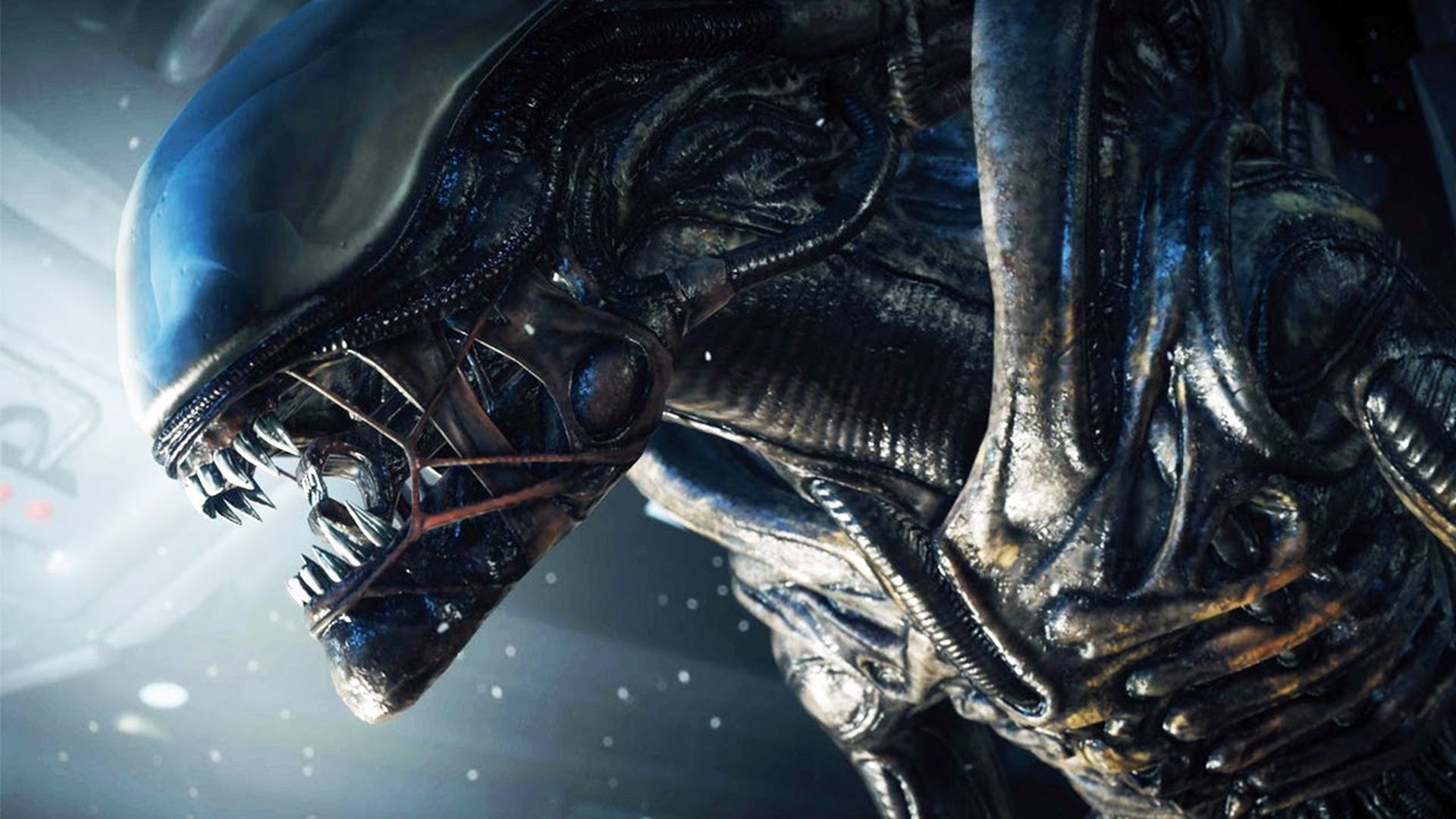
At the end of James Cameron’s ‘Aliens’, Newt, Hicks, Ripley, and an injured Bishop make their journey back to Earth on the spaceship Sulaco. However, due to a technical error, the ship finds itself in the territory of a Soviet Union-like socialist organization called the Union of Progressive Peoples. The UPP personnel then board Sulaco but get attacked by facehuggers, formed from the genetic material of Xenomorphs that was present inside Bishop’s severed body.
However, other UPP personnel destroy the creatures and recover Bishop’s body. After Sulaco docks in at Anchorpoint space station, two Xenomorph Drones attack the people who boarded the ship to investigate. Amidst the chaos and carnage, Ripley’s hypersleep tube catches flames and she goes into a coma, but Hicks and Newt escape unscathed.
The UPP personnel decontaminate Sulaco and Newt returns to Earth on it, to live with her grandparents. Meanwhile, Hicks takes up a job at a machine shop, and Bishop is repaired. But Bishop and Hicks soon learn that the UPP has been carrying out experiments with the Xenomorph genetic material that they retrieved from Bishop’s body parts.
As Bishop and Hicks try to infiltrate the Anchorpoint lab, they learn that the Xenomorph DNA gets spliced with human DNA on a molecular level and results in an Ovomorph. When this Ovomorph finds itself close to a host, it liquifies and shoots spore-like formations into the air.
This process allows the host to get infected, and after a gestation period of a few hours, the host undergoes an extremely violent transformation which ends in a Xenomorph bursting out of the host’s body. Furthermore, samples of this hazardous substance were sent to Earth on Sulaco. Back at Anchorpoint, the experiments with the Xenomorphs go out of control, and the place gets infested.
Hicks realizes that the end is near and manages to send Ripley back to Earth while she is still in coma. As a last resort to contain the infestation, a UPP cruiser destroys the station with a nuclear strike. In the end, only Hicks, Bishop, and two others survive, and Bishop theorizes that the only way to save humanity was to find the homeworld of Xenomorphs and destroy it.
William Gibson’s work was discarded; Space commies hijack alien eggs? —a big problem in Mallworld. But when writer and director Dirk Maggs picked up the same piece of work, he converted it into one of the most successful audio dramas of the year 2019. Once you plug in the headphones and close your eyes, the gripping story takes you to a whole other level of tension and suspense.
Although the script has too many twists, turns, and subplots, they never feel out of place or unnecessary. What’s most beautiful about the script is that it relies more on lore and original characters to give a comprehensive story. While David Fincher’s ‘Alien 3’ received cold to lukewarm responses from critics and fans alike, things would have been way different for ‘Alien 3’ had they used Gibson’s script.
David Twohy’s Alien III
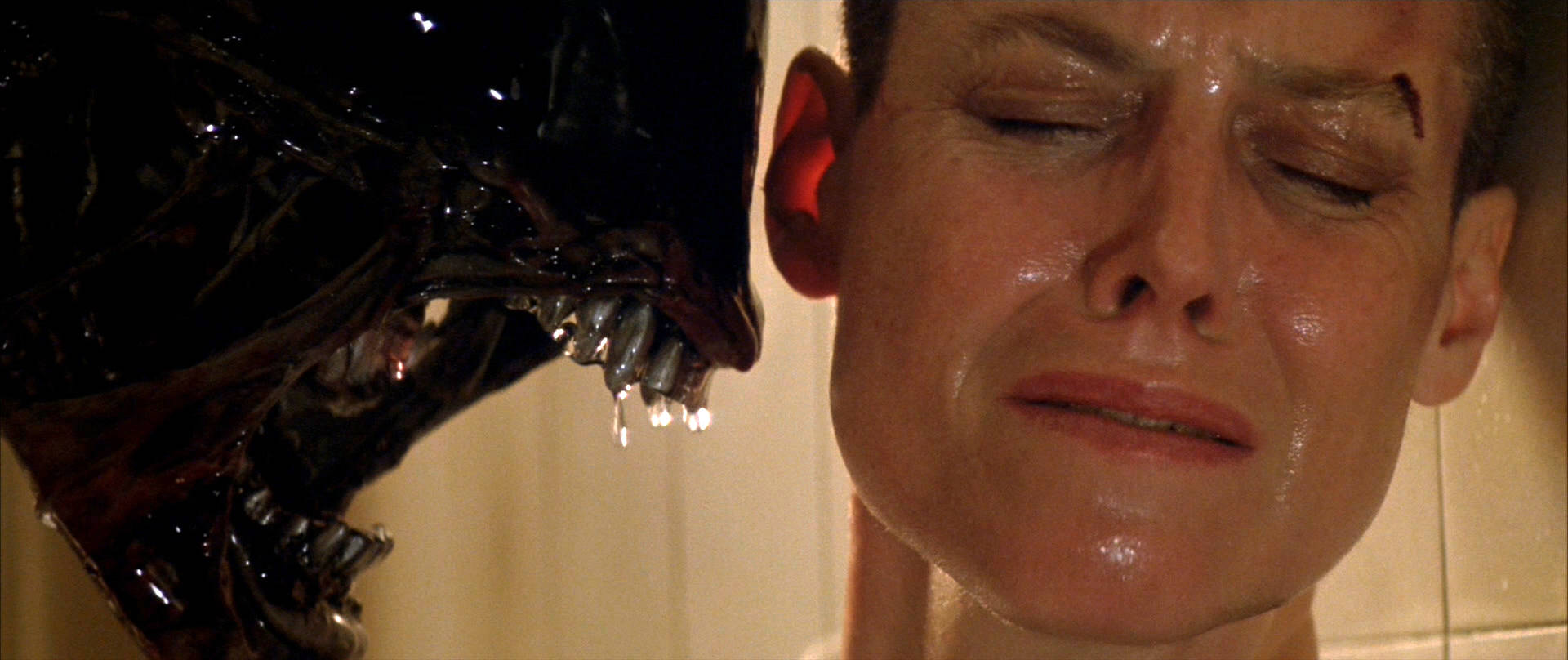
Somewhere deep in space, a mining ship comes across a facehugger captured in amber, kind of like the mosquito from Jurassic Park. But you’d be surprised to know that the original Jurassic Park novel was not published when Twohy wrote his script. The person in charge of the mining ship immediately contacts the Xenomorph-hungry Weyland Yutani and gives them the entombed facehugger.
Three years later, the story shifts to a prison space station called Moloch Island. Interestingly, Moloch Island orbits the Earth, much like a satellite. So, here we have the first script that looked something like the film ‘Alien 3’; you know, a giant prison, aliens, etc. Anyway, Moloch Island gets its new batch of prisoners, i.e., Styles, Grimes, Van Brunt, Domingo, and Kiryu.
As soon as they arrive, they are put to work in a huge foundry that’s built at the center of Moloch Island. Later that day, after they finished their work, they discovered that all the cells in the unpoliced cellblock were occupied.
A strange inmate named Bellhop offers to take the new arrivals to empty cells in return for the money that they earned at the foundry. Styles and the others agreed and he took them to the deepest level of the facility, which was suspiciously empty. The only people who resided in those cells were people with pronounced disabilities. Styles spent the night hearing strange screeching noises coming from other cells.
The next day, another inmate named Ivory was supposed to be executed in a gas chamber, but when the process was complete, he just fell unconscious and didn’t die. It’s later revealed that Ivory’s chest housed a chest-burster that came out of Ivory, killing him.
It was also revealed that Weyland Yutani had been using the prisoners as subjects for Xenomorph experiments, and the evil corporation was making Xenomorphs from scratch. Lastly, Styles will have to take care of the situation by not only killing the Xenomorphs but also stopping Weyland Yutani’s nefarious experiments.
While Twohy’s script was not chosen to be turned into a film, it did lay the groundwork for Alien 3’s Fiorina 161 Class C Work Correctional Unit, another prison that gets attacked by a Xenomorph. Moreover, the depiction of deformed bodies in Twohy’s script was touched upon by ‘Alien Resurrection’ in the form of Ripley’s clones.
Although the script looked promising, it failed to feature Ripley. Joe Roth, who was the president of 20th Century Fox at the time, categorically said that he wouldn’t greenlight an alien film that didn’t feature Sigourney Weaver. Naturally, the script was trashed.
Vincent Ward’s Alien III

Although it was one of Vincent Ward’s stories that were turned into ‘Alien 3’, he had written another script that didn’t see it through. In the unproduced script, Vincent envisioned a planet that was housed by reclusive monks and had an archaic and wooden interior design. The story served as a direct sequel to Cameron’s ‘Aliens’ and began with one of the monks seeing what he called a star in the East, which was supposed to be a good omen.
However, this star was Ripley’s escape pod that had drifted away from its set course to Earth. As soon as Ripley arrives on the planet, Ward starts giving incessant suggestions of Alien presence. However, the monks of the planet believe that it is a creature that is punishing them for their sinful misdemeanors.
Some even went as far as believing that the Xenomorph was the Devil himself. Soon, the monks start to feel that it is some kind of a godly test where their sexual temptations are being tested because Ripley was the first woman among the all-male population in the last ten years.
In order to escape the possibility of committing a sin, they lock her in a sewer and ignore all her warnings about the true nature of the creature that was haunting them. Finally, Ripley and one Brother John join hands to fight off the evil, but when it becomes clear that there’s no possibility of a happy ending, Brother John sacrifices himself to save Ripley.
Of all the unproduced scripts that we’ve looked into today, this one is by far the most original, arresting, and undeniably attractive. It had everything from the possibility of action sequences to the inclusion of philosophical undertones like that of ‘Prometheus’ and ‘Covenant’.
Having said that, Fox executive Jon Landau discarded the script, calling it artsy-fartsy and lacking commercial value. Yet, Ward was given several opportunities to bring changes to his script so that it was better suited from a cinematic angle. Ward’s wooden cathedral of monks was changed into a massive prison. And although David Giler, Walter Hill, and Larry Ferguson wrote the screenplay, it was Vincent Ward’s story that ultimately prevailed.
